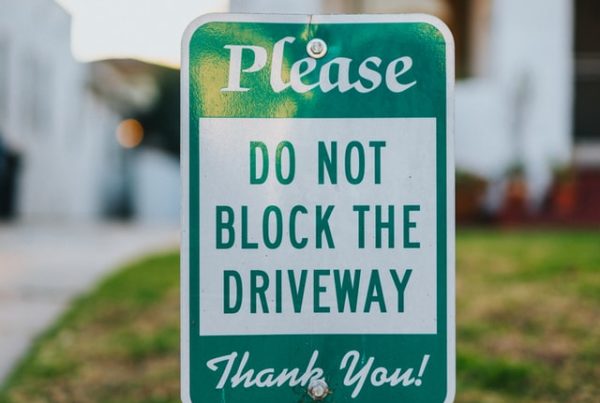How do I apply for Clean and Green assessment in Pennsylvania?
The Pennsylvania Farmland and Forest Land Assessment Act, commonly known as Act 319 or the “Clean and Green” Act, was created and passed by our legislature as a way to provide a real estate tax benefit to landowners of agricultural or forested land. The savings to these types of land owners occurs because “clean and green” land is taxed on the basis of its “use value” rather than its “market value;” thereby significantly lowering the overall real estate tax burden on the land.
To apply for Clean and Green Tax Status, obtain the application from your County Assessment Board:
Each of the 67 counties in Pennsylvania have a County Board of Assessment; these are the folks responsible for assessing your land for real estate tax purposes. They are also responsible for administering the Clean and Green program; thus, they are who you contact for an application.
Once you are approved for Clean and Green tax status, the reduced real estate taxes will remain in place so long as the land continues to qualify for the program; meaning, if you change the “land use” the county could remove the Clean and Green tax status. Change of use can be anything outside the list of approved “uses” discussed below, but the most common is when a land owner subdivides the qualified land into smaller, non-qualifying lots.
So, in order to apply, the first thing to do is get in contact with your local county Assessment office to obtain the application for Clean and Green. If you are located in the Central Pennsylvania region, here are the folks to contact:
- Centre County: https://centrecountypa.gov/423/Tax-Assessment
- Mifflin County: http://www.co.mifflin.pa.us/dept/Assessment/Pages/default.aspx
- Clearfield County: https://clearfieldco.org/assessment-tax-claim/
- Blair County: http://www.blairco.org/Dept/Assessment/Pages/BlairCounty.aspx
- Clinton County: https://www.clintoncountypa.com/departments/assessment
To qualify for Clean and Green status, the Act mandates that the land meets ONE of the following conditions:
- If the Land is presently devoted to agricultural use: Such land must have been devoted to agricultural use for the past three years AND is not less than 10 contiguous acres in area, including the farmstead land; or, has an anticipated yearly gross income of at least two thousand dollars ($2,000.00)
- If the Land is presently devoted to agricultural reserve: Such land is not less than 10 contiguous acres in area, including the farmstead land
- If the Land is presently devoted to forest reserve: Such land is not less than 10 acres in area, including the farmstead land.
When determining whether you wish to enroll your land as Clean and Green tax status, it is important to keep in mind that a land owner may not enroll less than the entire contiguous portion of the land described in the deed which is applicable to a tract for which enrollment for Clean and Green tax status is sought.
Thankfully, however, any land area that is burdened by a public or private road, right-of-way, or easement will be included in the determination of minimum contiguous area (10 acres) required by the Act – just in case you are worried about your total acreage.
What qualifies at Agricultural Use under the Clean and Green Act?
Agricultural use is defined as, among other things, the use of the land for the purpose of producing an agricultural commodity.
The Act defines “agricultural commodity” to include any of the following:
- Agricultural, apicultural, aquacultural, horticultural, floricultural, silvicultural, viticultural and dairy products;
- Pasture
- Livestock and the products thereof
- Ranch-raised fur breading animals and the products thereof
- Poultry and the products of poultry
- Products commonly raised or produce on farms which are:
- Intended for human consumption; or
- Transported or intended to be transported in commerce
- Processed or manufactured products of products commonly raised or produced on farms which are:
- Intended for human consumption; or
- Transported or intended to be transported in commerce
- Compost.
What qualifies at Forest Reserve under the Clean and Green Act?
Forest reserve is defined as land, 10 acres or more, stocked by forest trees of any size incapable of producing timber or other wood products.
What qualifies at Agricultural Reserve under the Clean and Green Act?
Agricultural reserve is defined as noncommercial open space land used for outdoor recreation or enjoyment of scenic or natural beauty and opened to the public for such use without charge or fee on a nondiscriminatory basis.
The Clean and Green program is a wonderful way for land owners to save tax dollars on land they hold for agricultural or forest reserve purposes, if you need assistance understanding or applying for these programs, please feel free to contact our office so that we may schedule an appointment at your convenience.
LEGAL DISCLAIMER:
This blog positing is made available for educational purposes only as well as to provide Central Pennsylvanians with general information and a general understanding about this area of Pennsylvania law, not to provide specific (or any) legal advice. Use of this blog does not create an Attorney-Client Relationship with the publisher, Covalt Law, or Nittany Settlement Company. This blog is for general informational purposes only. Covalt Law is a law firm in State College, Pennsylvania and some of the information within this blog relates to legal topics. Covalt Law, LLC does not offer or dispense legal advice through this blog or by e-mails directed to or from this site. By utilizing this blog, the reader agrees that the information contained herein does not constitute legal advice or other professional advice and no attorney-client relationship or other relationship is created between the reader and Covalt Law, Nittany Settlement Company, or its attorneys. Moreover, this blog is not a substitute for obtaining legal advice from a qualified attorney licensed in your state or jurisdiction. The information on this blog may be changed without notice and is not guaranteed to be complete, correct, or up-to-date. While the blog is revised on a regular basis, it may not reflect the most current legal developments or law in your jurisdiction. The opinions expressed at or through the blog are the opinions of the individual author and may not reflect the opinions of the firm or any individual attorney.
Additionally, to ensure compliance with requirements imposed by the U.S. Internal Revenue Service in Circular 230, we inform you that any tax advice contained on this site (including any links provided) is not intended or written to be used, and cannot be used, for the purpose of (i) avoiding penalties under the U.S. Internal Revenue Code or (ii) promoting, marketing, or recommending to another party any transaction or matter addressed in this communication.








Thank you!